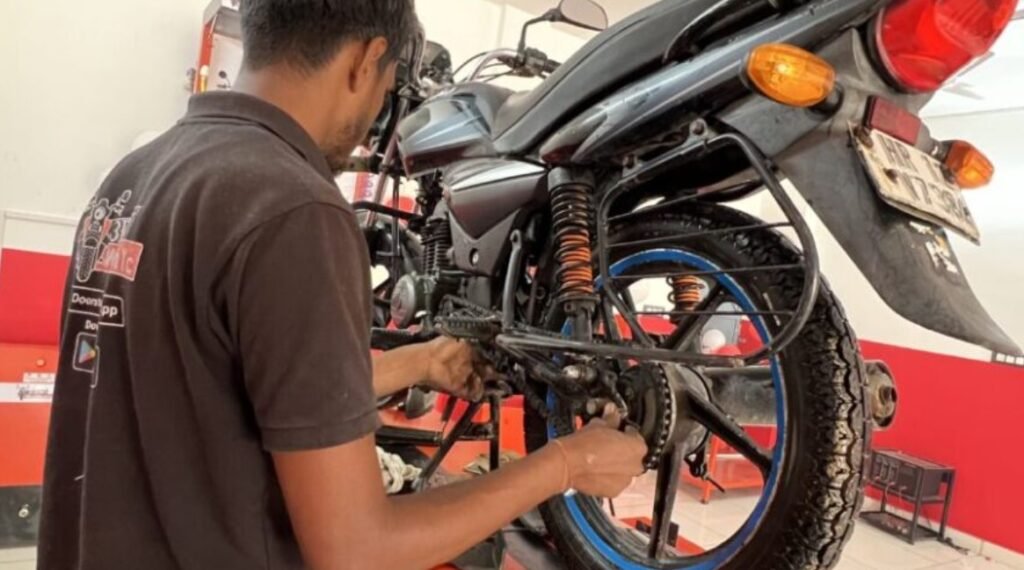Across bustling city streets and serene rural trails, bicycles have remained a beloved mode of transportation for people of all ages. Their adaptability and environmental benefits make them a crucial component of modern mobility solutions. As the world pivots towards digital innovation, so too do the services surrounding bicycle maintenance and repair. “Ride and Repair” encapsulates this transformation, shedding light on how digital platforms and technological advancements are revolutionizing the bike service industry.
The Modern Cyclist’s Demands
Cyclists today are more informed, demanding a seamless blend of convenience, efficiency, and reliability in their biking experiences. With the surge in urban cycling and a renewed focus on sustainable transportation, there’s an ever-growing demand for accessible, high-quality repair services. This demand marks a pivotal moment in the cycling world, where integrating digital solutions becomes not just an opportunity but a necessity to meet these heightened expectations.
Digital Tools Enhancing Bike Repair
Mobile Applications
One key element in the digital landscape of bike services is the advent of mobile applications. These apps offer cyclists quick access to repair guides, service scheduling, and even virtual consultations. They have become indispensable tools for many riders, effectively transforming smartphones into on-the-go maintenance hubs. Apps provide detailed tutorials for DIY repairs, notifications for routine maintenance, and connections to local skilled mechanics through user-friendly interfaces.
Online Booking Systems
Streamlining the process from diagnosis to repair, online booking systems have simplified how cyclists access maintenance services. By allowing riders to schedule repairs at convenient times, these systems alleviate the hassle of wait times and service availability. This online capability extends to integrating logistic services, where bike pick-up and drop-off are coordinated seamlessly, offering unparalleled convenience.
The Rise of Telemechanics
With the shift toward remote assistance, telemechanics have emerged as a novel trend in the cycling service sector. Through video calls and digital diagnostics, experienced bike mechanics can assess issues, provide repair guidance, and even walk riders through complex fixes in real-time. This approach not only democratizes knowledge sharing but also empowers cyclists to tackle problems independently, diminishing reliance on physical workshops.
The Impact of IoT and Smart Bicycles
Enhanced Connectivity
Internet of Things (IoT) technology has found its way into bicycles, offering innovative solutions such as smart locks, GPS tracking, and intelligent monitoring systems. These advancements facilitate proactive maintenance by alerting riders to potential issues before they escalate. Sensors embedded within the bike frame can relay information on component health, recommending timely interventions through connected applications.
Data-Driven Decisions
Through the collection and analysis of data, cyclists can make informed decisions about their riding habits and maintenance needs. Analyzing data from smart bicycles allows for the optimization of performance, ensuring that riders maintain peak efficiency. Moreover, data-driven insights contribute to safer riding experiences by highlighting critical safety checks.
Community and Social Engagement
Online Forums and Support Networks
An unexpected but valuable offshoot of digital integration in bike services is the strengthening of cyclist communities. Online forums and social networks bring together enthusiasts and professionals to share knowledge, advice, and support. Whether troubleshooting an obscure repair issue or exchanging tips on maximizing bike longevity, these communities foster a sense of belonging and shared purpose among cyclists.
Virtual Repair Workshops
As a feature of direct engagement, virtual repair workshops have blossomed, providing interactive learning opportunities for cyclists eager to expand their skill set. Led by experienced mechanics, these workshops offer practical demonstrations, Q&A sessions, and personalized feedback—all from the comfort of the home garage.
Environmental and Economical Benefits
Sustainability in Bike Services
By reducing the need for frequent physical shop visits through digital diagnostics and remote assistance, the environmental footprint of bike repair services is considerably reduced. Fewer trips mean lower carbon emissions, aligning the service process with the sustainable ethos fundamental to cycling. Digital repositories also cut down on paper waste, as manuals and records transition to digital formats.
Cost Effectiveness
Digitally enhanced repair services often translate to cost savings for cyclists. By avoiding unnecessary trips to repair shops through effective telemechanics and timely maintenance alerts, cyclists can save time and money. More importantly, these services extend the life of bicycles, making the initial investment more economically plausible over the long term.
Challenges and Opportunities
Overcoming Digital Skepticism
Despite the advantages, there remains some skepticism regarding the security and reliability of digital biking solutions. Addressing these concerns through robust security protocols and transparent communication around data usage and privacy is vital. Building trust within the cycling community is an ongoing opportunity for service providers aiming for widespread adoption.
Future Innovations
As technology continues to advance, the horizon is filled with potential innovations ready to further transform bike services. From augmented reality (AR) tools offering step-by-step repair visualizations to advanced AI-driven diagnostics predicting future maintenance needs—“Ride and Repair” is poised to continue evolving with all eyes set on what’s next.
Conclusion
Biking enthusiasts worldwide are already experiencing the benefits of the digital revolution in bike services. The integration of technology has not only revolutionized how cyclists manage and maintain their bikes but has also profoundly impacted community engagement and sustainability efforts. As the “Ride and Repair” movement gains momentum, it promises to ride forth into a future where bicycles and technology coexist harmoniously, enhancing every ride.
